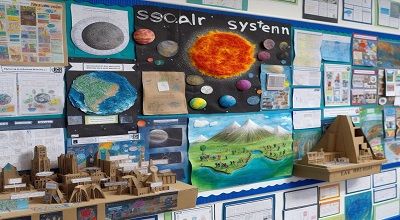Examples Of Student Work In Project-Based Learning
Student Work in Project-Based Learning (PBL) is an instructional approach that allows students to engage in real-world, meaningful projects to develop and apply key knowledge and skills. The nature of PBL encourages creativity, critical thinking, collaboration, and problem-solving. Here are some examples that might inspire your own PBL initiatives:
STEM Projects:
- Designing and building a functional model of a renewable energy source.
- Creating a prototype of a new gadget or technology to solve a real-world problem.
- Conducting experiments to explore scientific phenomena and presenting findings.
Social Studies/History Projects:
- Simulating a historical event or period through role-playing and presentations.
- Researching and presenting on a current global issue, proposing potential solutions.
- Creating documentaries or multimedia presentations on historical figures or events.
Language Arts Projects:
- Writing and performing a play based on a novel or historical event.
- Collaborative storytelling projects where each student contributes a part to create a complete story.
- Writing and publishing a class book of short stories, poems, or essays.
Art and Design Projects:
- Creating a public art installation that addresses a community issue.
- Designing and producing a magazine covering various topics of interest.
- Collaborative mural or sculpture projects that represent a theme or concept.
Community Service Projects:
- Organizing a community clean-up or beautification project.
- Designing and implementing a recycling or sustainability initiative.
- Volunteering at local organizations and reflecting on the experience.
Mathematics Projects:
- Solving real-world problems such as budgeting for a community event.
- Designing and building scale models or architectural plans for a project.
- Creating math-based games to teach concepts to younger students.
Technology and Coding Projects:
- Developing a website or app to address a community need.
- Coding and programming solutions to automate certain tasks or processes.
- Creating video tutorials to teach coding or technology skills to others.
Business and Entrepreneurship Projects:
- Developing a business plan for a student-run enterprise.
- Creating and marketing a product, such as a custom-designed item or service.
- Simulating a stock market trading game to teach financial literacy.
Student Work in Project-Based Learning: Note that the key to successful PBL is providing students with authentic, challenging tasks that require critical thinking and collaboration. Additionally, assessing both the final product and the process is crucial for a comprehensive understanding of student learning.
